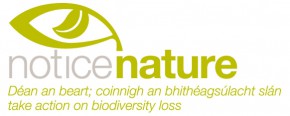Machair:
- Avoid overgrazing of machair as this can seriously damage the vegetation structure and cause erosion. Supplementary feeding can damage the vegetation structure with animals tending to remain close to these feeding points. Therefore spread the feed over large areas or locate feeding points in areas which are not important for wildlife and/or moved frequently, in order to reduce the affects.
- Avoid the use of fertilisers on Machair grassland. Fertilisers can produce a dense grass sward (avoided by nesting birds) and reduce the plant and insect diversity.
- In the case of machair that is being used to grow hay, the mowing date also determines whether early or late flowering plants thrive. Where possible, cut after 1st August, to allow the seeding of late flowering meadow plants, and especially if a Corncrake is present. In this case, mowing the field should be from the centre outwards. Mowing followed by aftermath grazing will produce the structural diversity that creates the maximum wildlife interest.
- Get involved in the REPS scheme for coastal agricultural land.
- Don’t leave rubbish on beaches or anywhere near the coast
Golf courses and developments such as caravan parks, very close to the coast can disturb the natural development of coastal habitats and noise and light could disturb the local fauna.
Back to Habitat Diversity menu
